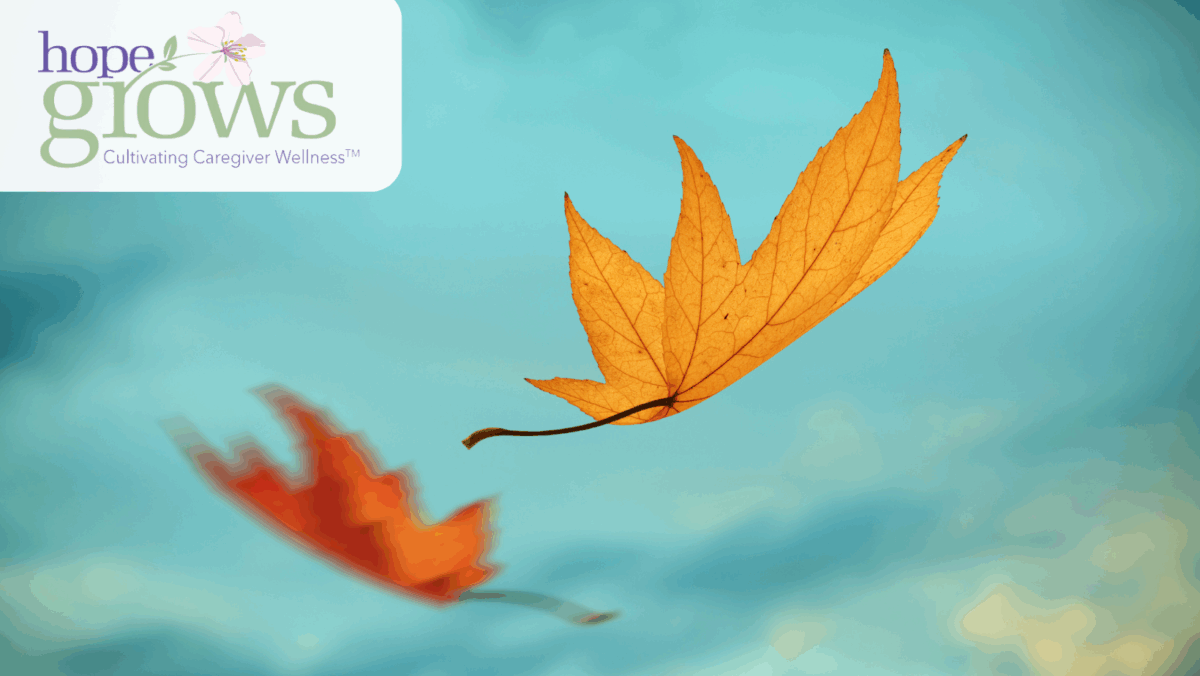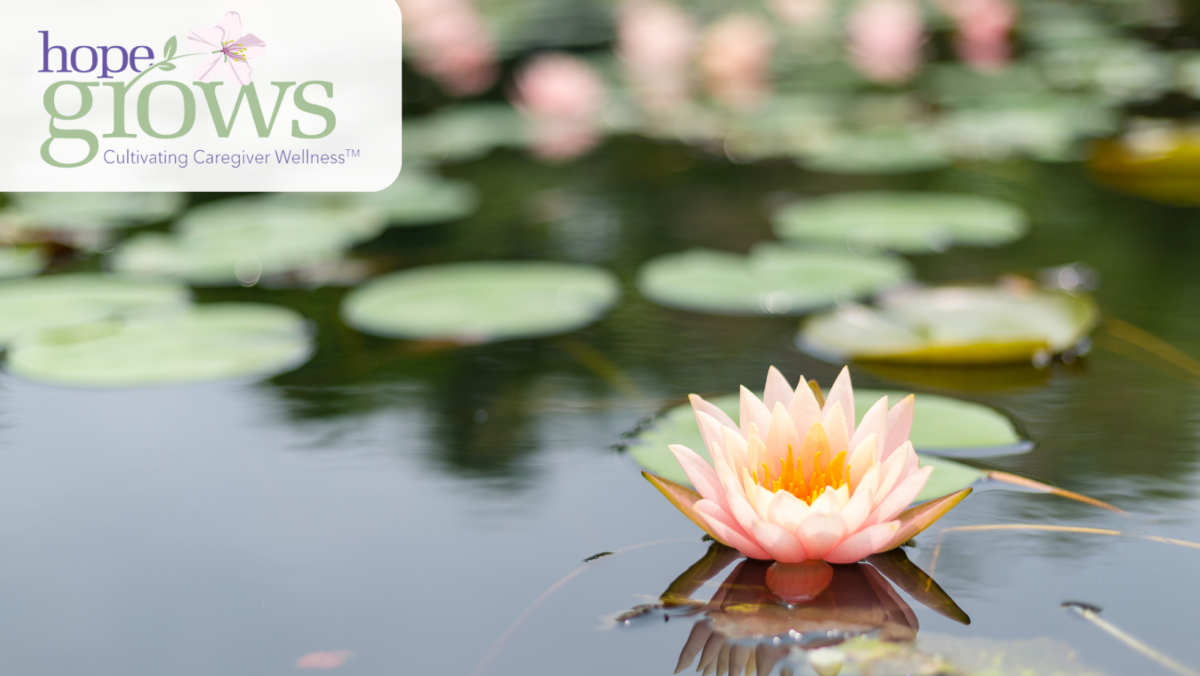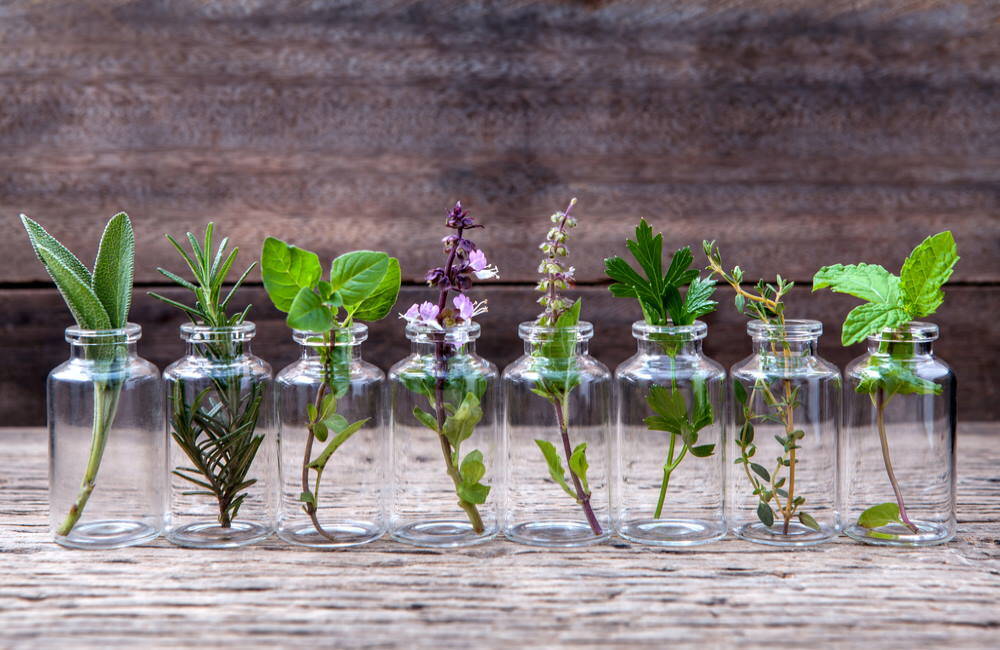Autumn Equinox Reflections: Tethered in Transition
Look out your window.
Every falling autumn leaf is a tiny kite
with a string too small to see
held by the part of you
in charge of making beauty out of grief.
-Andrea Gibson
Autumn is often described as a season of letting go, but late poet Andrea Gibson shifts that perspective: the leaf is not severed, it’s tethered. Even as it drifts, it remains bound by an invisible string to “the part of you in charge of making beauty out of grief.” This reframes loss as continuity rather than absence. The autumn equinox, too, is not simply a point of light diminishing but a hinge moment. In caregiving and grief, this resonates deeply: the people we love don’t simply “fall away.” Their lives, rituals, or even the exhaustion and tenderness of caregiving remain tethered in memory, shaping us. What’s lost still pulls on us, even if the string is too fine to see. Gibson’s leaf-as-kite image shows autumn as a season of staying tethered in invisible ways. That’s exactly what the equinox is: a balance point we can’t quite see, but that still holds us.
Summer often drives us outward into endless lists and tasks fueled by long daylight hours. I always start summer with a long list… that I never quite complete. The abundance of light can feel like pressure to do more, achieve more. Autumn arrives as a gentle course correction. Days shorten, and instead of “get it all done,” the season invites us to ask: What’s worth gathering in? What matters most to keep tethered before the darkness deepens? Where summer stretched us into endless doing, autumn invites us into choosing—what do we gather in, what do we let lie, what invisible strings do we honor before the darkness deepens?
“Equinox” comes from the Latin aequus (equal) and nox (night). On this day, night and day are nearly the same length. The balance is fleeting—it tips almost immediately. This teaches us that equilibrium isn’t permanent, but a moment we pass through. What a kindness this revelation is.
My soul expands whenever nature surrounds me. This morning, the scent of fall was on the breeze. It was a mix of damp, pre-rain air, dying leaves, late-summer blooms, and something I can’t quite name. While September often feels like an extension of summer, this morning felt right. Something deep in my soul reached toward the autumnal pull and found a friend, a compassionate knowing in the shifting season. I exhaled into the dark gray blanket, and it surrounded me with the comfort of a mother. Nature has a way with us, doesn’t she?
When I left my house an hour earlier, the sky was ablaze—the kind of sunrise granted only on bright mornings before a storm. Summertime streaked the sky in pinks, oranges, purples, and reds. The cozy gray of autumn swallowed the colors whole, and my soul exhaled.
Autumn carries a feeling of liminality. It is neither hot nor cold, but it can be each at times. It begins fully green and ends fully bare, delivering its bounty to carry us through cold, dark months. Autumn is a season of unveiling, of showing what’s been inside all along. Leaves reveal hidden colors as chlorophyll breaks down. Symbolically, this is powerful: the green of summer isn’t lost; it’s stripped away, allowing what was always there to shine in red, orange, and purple brilliance. Fall’s palette isn’t just beauty before death. The hues are truth revealed at the moment of transition.
The gentleness of fall steadies us… if we choose to embrace it. Yes, it signals the approach of barren cold, but it is also mild and gentle. It doesn’t scorch or freeze. It allows for natural release, quiet dying, lingering goodbyes. The leaves that fall to reveal bare branches create a blanket over the hard, dusty ground, promising nourishment for the growth to come. What we let go of during our fall seasons isn’t lost forever. As it disintegrates into the ground, its lessons, wisdom, and richness soak into the places that will sprout new life. Whether losses or gains, highs or lows, failures or successes, the things we shed in preparation for life’s darker seasons become the nourishment that will emerge again in the spring.
“To let go, I allow life’s brevity to be its magic.“
Another line inspired by Andrea Gibson, a masterful weaver of words whose life on earth ended this past July, one month shy of 50 years old. These words reorient me on days that pass too quickly. If we don’t let go, we drag the past into the coming winter. Rather than nourishing the ground as it naturally falls apart, it becomes deadweight, frozen in place.
We can be afraid and unravel chaotically, or we can trust the process, embrace letting go, and believe the things we’ve held onto will become the nourishment that brings forth tomorrow’s beauty. We can bemoan the cooler temperatures and dead leaves underfoot, or we can see these days as gifts—a cushion between the heat of summer and the cold of winter, a time to prepare for all that is to come.
Sometimes a season ends long before we notice. We don’t always get to choose our “lasts.” We don’t always know. Tomorrow looms mysterious—that’s a universal truth. There are always looming goodbyes, in every season. We just don’t always get to know what they will be. Lasts are so hard… and so are firsts. Both are necessary components of living, moving, and being.
And we will be asked: Are you willing? Are you willing to step into this change, this new chapter, this new season? Sometimes the question has the audacity to come after the change—it doesn’t ask our permission before shaking our comfortable lives. Sometimes it must… because we’d never choose it for ourselves, even if it’s what we need.
I want to exist in the present without sacrificing the beauty of the past or my hope for the future. I want to continue to learn how to dance in the both/and of grief and gratitude, to swim in the waters of tension and unknowing with a heart that trusts and says yes to what comes next. Like the light and dark of the equinox, these are realities that can be held simultaneously.
Written by Laura Gamble
Clinical Administrative Coordinator




